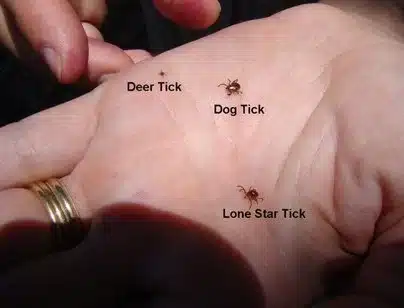A clear picture of a tick can make all the difference when you’re trying to identify these tiny pests on your skin or clothing. During a recent road trip, I had to make a quick stop and walked through what seemed like an innocent field. When I got back to my car, I discovered four ticks crawling up my leg! That experience drove home how important it is to know exactly what you’re looking for.
The Mid-Atlantic region sits right in the middle of America’s Lyme disease belt. Maryland reported 2,035 confirmed Lyme cases in 2022, while Virginia had 1,403 cases. Additionally, having family members and former colleagues personally affected by Lyme disease has shown me the real consequences of tick encounters. The long-term effects on their health and diet really emphasized how crucial early identification and treatment can be.
Why a Clear Picture of a Tick Matters for Identification
Most people can’t properly identify a tick without seeing one first. This creates a serious problem because different tick species carry different diseases. What looks like a small spider or beetle might actually be a disease-carrying tick.
Climate change has made tick identification even more important. Adult black-legged ticks now stay active during winter days above freezing, according to the University of Maryland Extension. This means year-round vigilance is necessary rather than just seasonal awareness.
Basically, a good picture of a tick helps you understand size, color patterns, and body shape. These visual clues determine whether you’re dealing with a harmless bug or a potential health threat.
Understanding Tick Biology Through Pictures
Looking at a picture of a tick, you’ll notice they’re not insects - they’re arachnids like spiders and clover mites. Ticks have eight legs as adults and distinctive mouthparts designed for blood feeding.
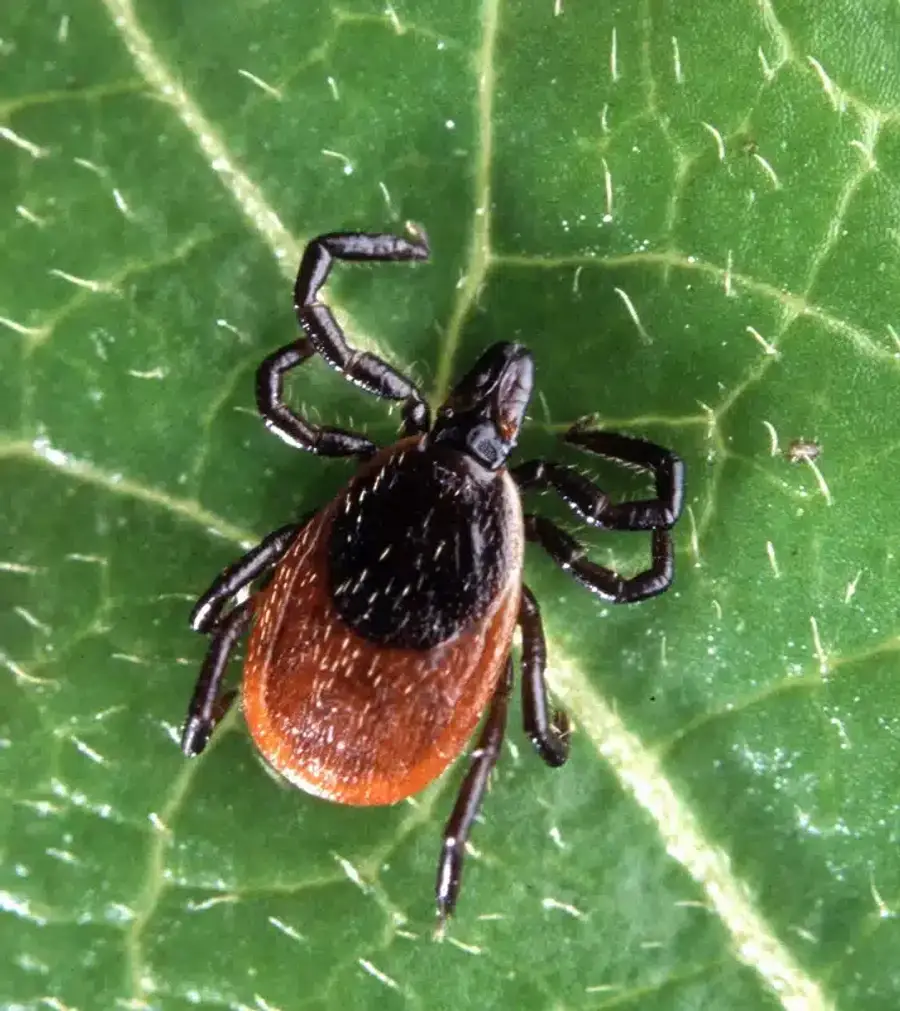
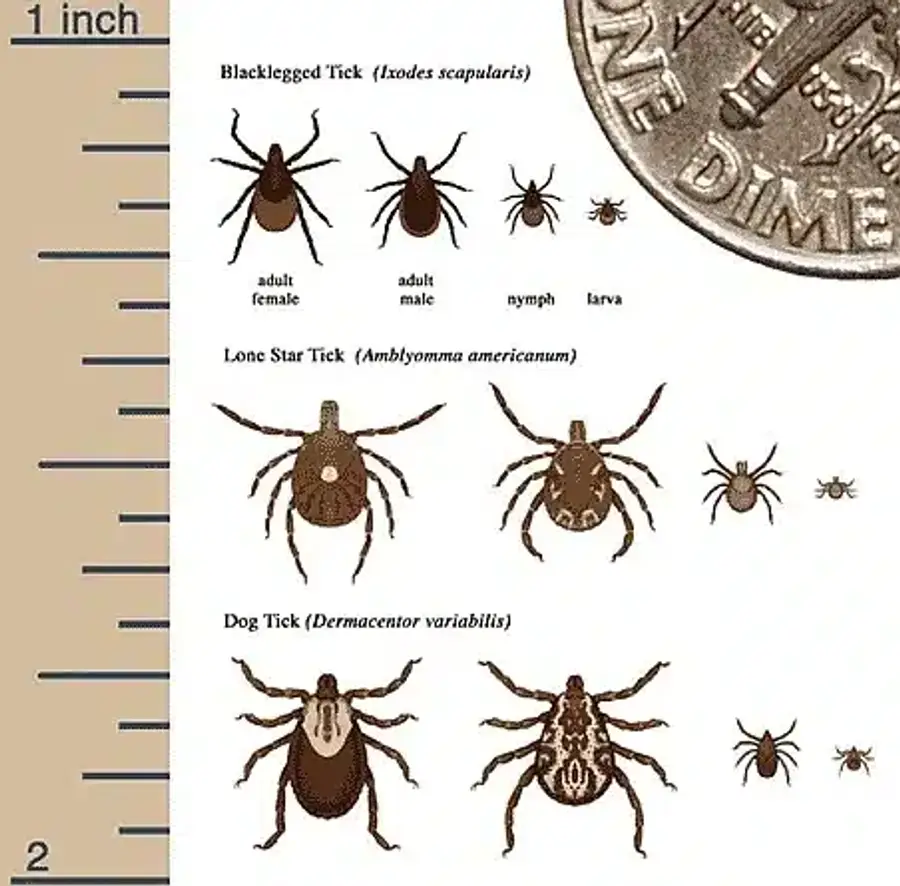
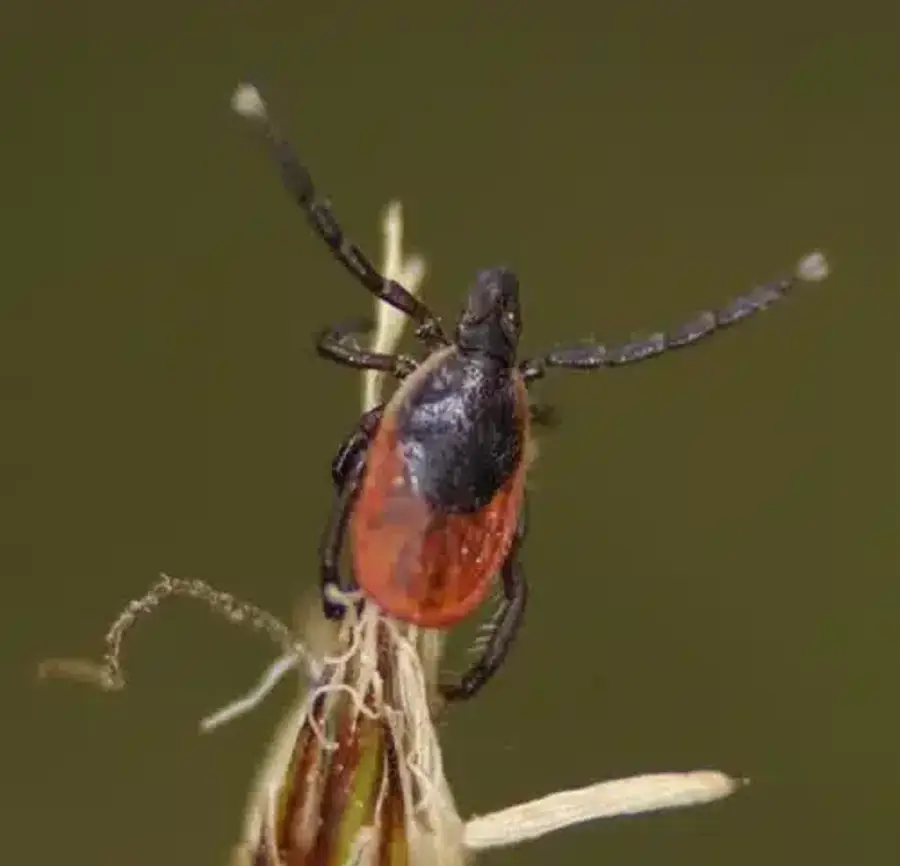
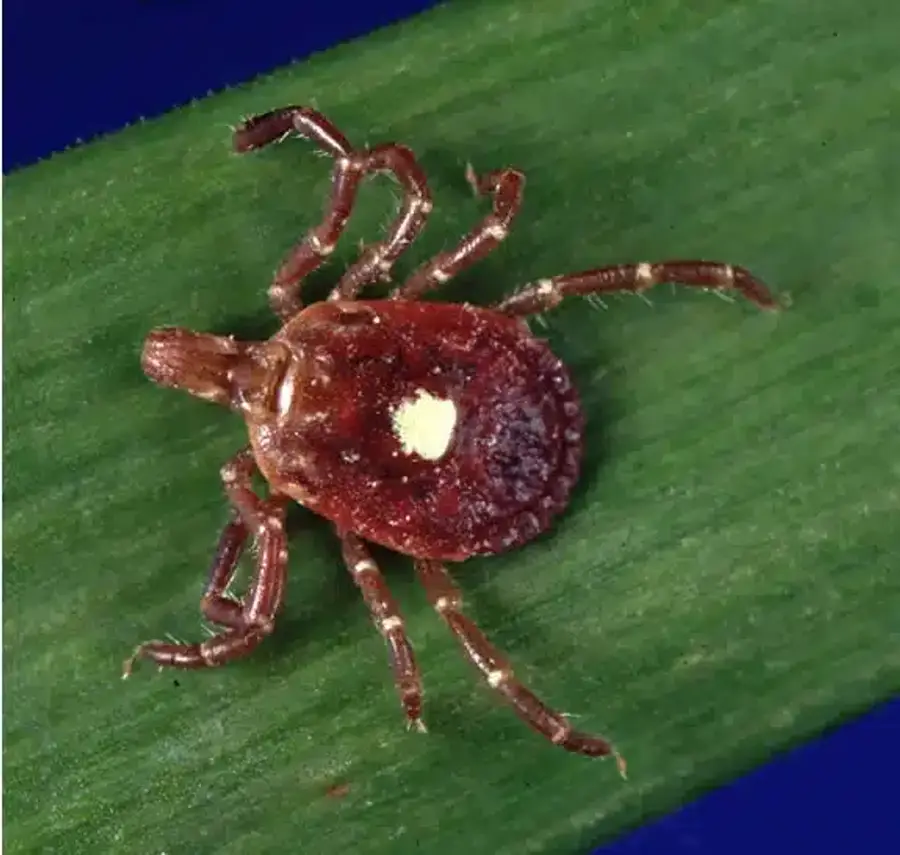
Ticks go through four life stages: egg, larva, nymph, and adult. Each stage except eggs requires a blood meal from animals to develop further. The complete cycle typically takes about two years for most species.
Understanding how ticks find hosts helps with prevention. They don’t jump or fly like many people think. Instead, they “quest” by climbing onto grass and leaves, then sensing carbon dioxide, heat, and vibrations from approaching animals or people.
Ticks at Different Life Stages
Larva Stage Identification
Tick larvae are incredibly tiny - about 1 millimeter long, roughly the size of a poppy seed. They have only six legs at this stage and appear almost translucent. Because they haven’t had a blood meal yet, larvae are less likely to carry diseases.
In pictures, larvae often look like tiny specks of dirt. They’re so small that most people miss them entirely during tick checks.
Nymph Stage Recognition
Nymphs are the most dangerous stage for humans because they’re active during warm months when people spend time outdoors. May through July represents peak nymph activity in our region. They’re still very small - about the size of a poppy seed - but now have eight legs.
Picture of a tick nymph shows a dark, oval body that can swell dramatically when engorged with blood. An engorged nymph might look like a small grape or raisin.
Adult Tick Appearance
Adult ticks are easiest to spot and identify from pictures. Females are larger than males and can expand to the size of a sunflower seed when fully engorged. Males typically stay smaller and darker.
The scutum (hard shield) on a tick’s back provides key identification clues. Different species have distinct color patterns and markings on this shield that show up clearly in good pictures.
Common Tick Species in the Mid-Atlantic Region
Black-Legged Tick
The black-legged tick, also called the deer tick, is our region’s primary Lyme disease carrier. Female show a distinctive brick-red abdomen with a black scutum. Males appear uniformly dark.
These ticks stay active year-round, with adults peaking in fall and spring. Nymph activity surges from late spring through early summer. They prefer forested areas and woodland edges.
Black-legged ticks transmit Lyme disease, anaplasmosis, babesiosis, and Powassan virus. Because of these serious disease risks, any black-legged tick attachment requires careful monitoring.
Lone Star Tick Identification
Lone star ticks show their most distinctive feature - a white “lone star” spot on the female’s scutum. Males display scattered white markings across their backs. These are aggressive biters found throughout our region below 1,600 feet elevation.
Lone star ticks are active from April through August and prefer areas with lower tree canopy. They transmit ehrlichiosis, tularemia, and are associated with alpha-gal syndrome - a red meat allergy.
The alpha-gal connection makes lone star tick identification particularly important. This delayed allergic reaction can develop after bites and cause severe reactions to mammalian meat products.
American Dog Tick Features
American dog ticks reveal ornate whitish markings on a brown scutum. These are our region’s largest ticks and peak from April through August in grassy, low-canopy areas.
Dog ticks transmit Rocky Mountain spotted fever and tularemia. Additionally, they can cause tick paralysis through neurotoxins in their saliva. This condition occurs mainly when ticks attach near the head or neck.
Brown Dog Tick Recognition
Brown dog ticks appear uniform reddish-brown in pictures, without ornate markings. They’re unique because they complete their entire life cycle indoors around kennels and pet areas.
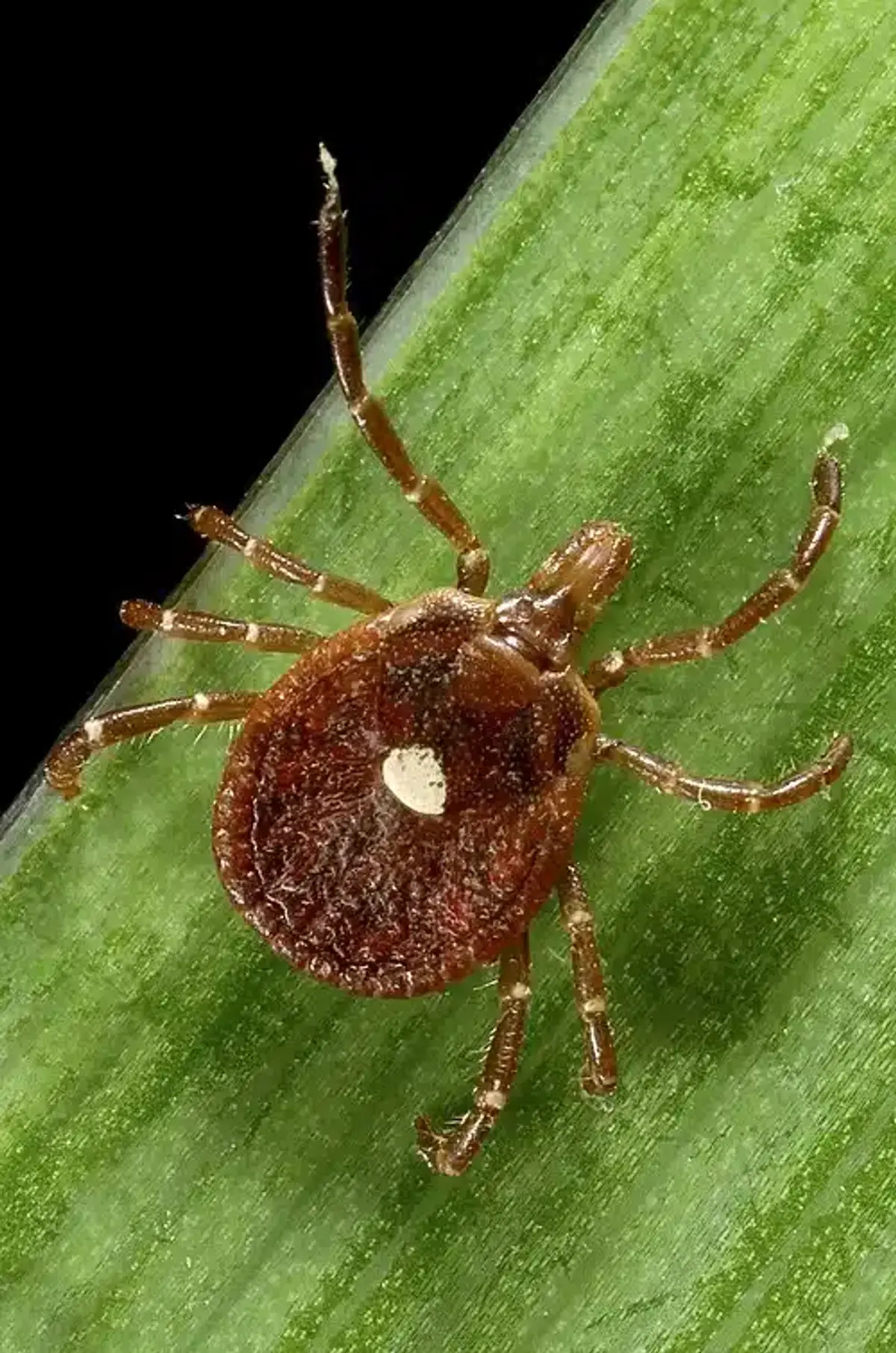
These ticks stay active year-round in heated buildings. While they primarily affect dogs, they occasionally bite humans and can transmit Rocky Mountain spotted fever.
Asian Longhorned Tick Concerns
This invasive species first appeared in Maryland in 2018 and Virginia in 2017. Pictures show reddish-tan ticks without ornamentation. Females can reproduce without mating, leading to massive local populations.
Asian longhorned ticks prefer pastures and tall grass areas. While they haven’t proven to transmit human diseases in the United States yet, they pose serious threats to livestock through blood loss and potential disease transmission.
Gulf Coast Tick Occurrence
Found sporadically in coastal Maryland and Virginia, Gulf Coast ticks can transmit Rickettsia parkeri spotted fever. They’re less common than other species but worth recognizing in pictures of ticks from our region.
Tick Habitat and Protection Strategies
My field encounter taught me that ticks are most common in natural areas like fields, forests, and woodland edges. They’re less likely in well-maintained lawns and landscaped areas.
When venturing into tick habitat, wear light-colored clothing so ticks show up clearly. Tuck pants into socks and shirts into pants to create barriers. Long sleeves provide additional protection.
The transition area between maintained landscape and natural terrain - called the ecotone - harbors the highest tick populations. This is where our technicians focus spray applications from April through October.
Health Risks from Different Tick Species
Lyme Disease Recognition
Lyme disease remains our region’s top tick-borne illness concern. Early symptoms include fever, fatigue, and often a distinctive “bull’s-eye” rash around the bite site. However, not all Lyme cases develop this characteristic rash.

Having watched family members struggle with Lyme disease really opened my eyes to the long-term impacts. The effects on their daily energy levels and dietary restrictions lasted for years beyond the initial diagnosis.
Ehrlichiosis and Anaplasmosis
These bacterial infections cause flu-like symptoms including fever, headache, and muscle aches. They’re transmitted primarily by lone star ticks and black-legged ticks respectively. Early antibiotic treatment is crucial for both conditions.
Powassan Virus Threats
While rare, Powassan virus has a 10% mortality rate and can cause permanent neurological damage. It’s transmitted by black-legged ticks and has been detected in Maryland and Virginia specimens.
Alpha-Gal Syndrome
This red meat allergy develops after lone star tick bites and causes delayed, severe allergic reactions to mammalian meat products. Symptoms can include hives, difficulty breathing, and digestive problems occurring 3-6 hours after eating beef, pork, or lamb.
Daily Tick Inspection Techniques
Perform thorough tick checks within two hours of outdoor activities. Most tick-borne diseases require 24+ hours of attachment for transmission, so quick detection dramatically reduces infection risk.
Check areas where ticks commonly attach: scalp, behind ears, underarms, around the waist, between legs, and behind knees. Use mirrors and ask family members to check areas you can’t see clearly.
Save any removed ticks in alcohol or sealed bags with the removal date. This helps with identification and potential testing if symptoms develop later.
Proper Tick Removal Techniques
Use fine-tipped tweezers to grasp the tick at skin level, as close to the mouthparts as possible. Apply steady, upward pressure without twisting or jerking. The goal is to remove the entire tick, including mouthparts.
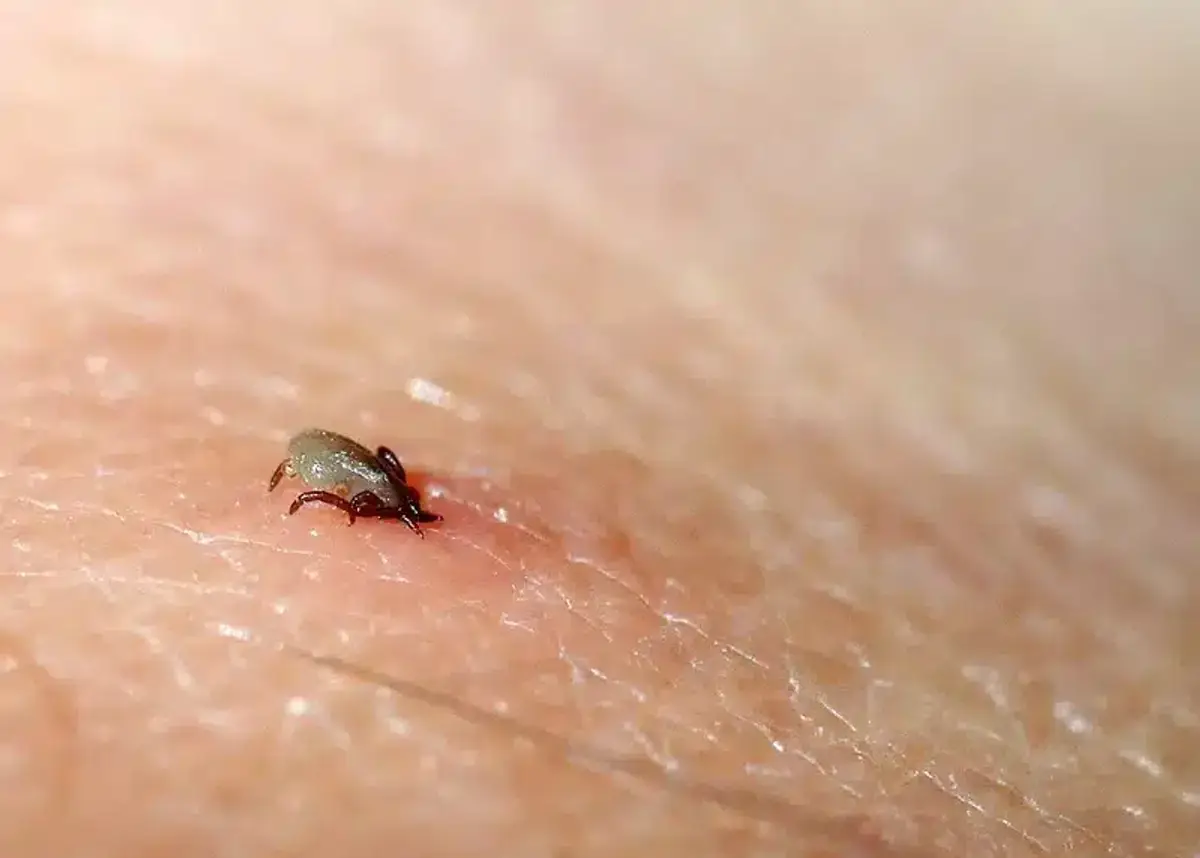
Avoid Folk Remedies
Don’t use petroleum jelly, nail polish, or heat for tick removal. These methods can cause ticks to regurgitate saliva into the bite wound, potentially increasing disease transmission risk. The CDC recommends against all these approaches.
Clean the bite area and your hands thoroughly with alcohol or soap and water after removal. Monitor the bite site for developing rash or other symptoms over the following weeks.
Post-Bite Monitoring and Medical Care
Watch for symptoms developing 3-30 days after tick removal. Fever, rash (especially expanding circles), headache, and muscle aches warrant medical evaluation. Seek care sooner if the tick was attached over 24 hours and identified as a black-legged tick.
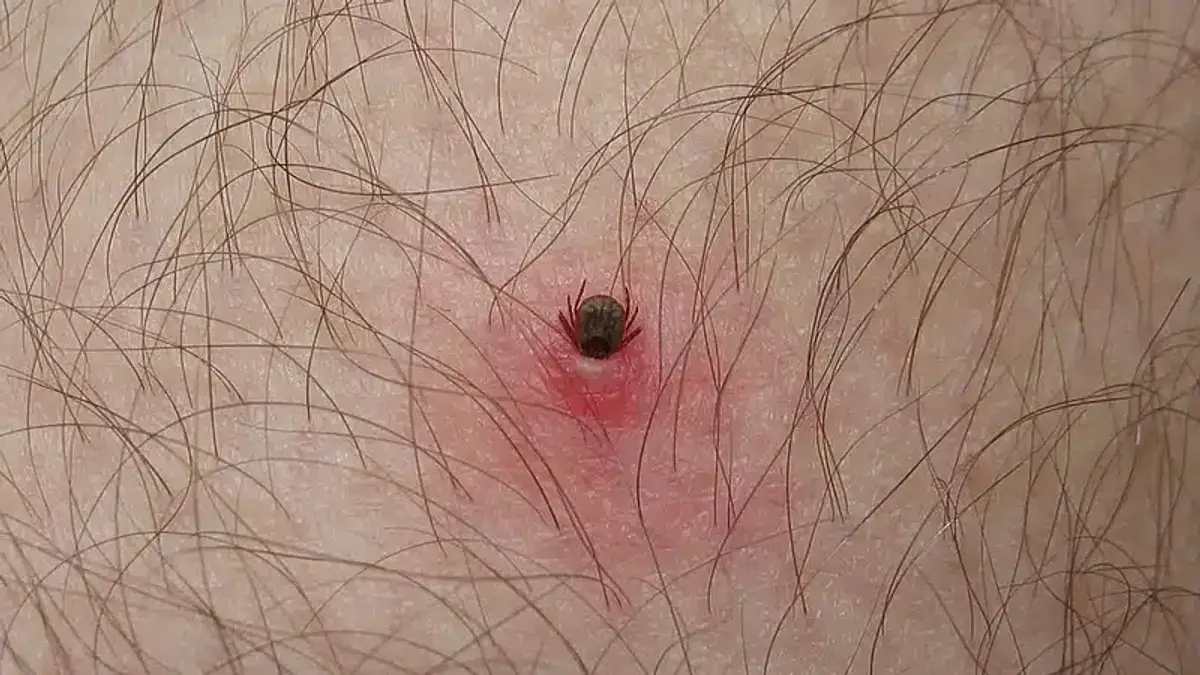
Document the bite location, removal date, and tick species if possible. This information helps healthcare providers assess disease risk and determine appropriate treatment approaches.
Personal Protection Strategies
Repellent Selection
Choose EPA-registered repellents containing 20-30% DEET, picaridin, IR3535, or oil of lemon eucalyptus for skin application. DEET provides longer protection, while picaridin offers better fabric compatibility.
Apply 0.5% permethrin treatments to clothing and gear. These treatments last through multiple washings and provide excellent tick protection. Many outdoor retailers sell pre-treated clothing options.
Clothing and Behavior
Light-colored, tightly-woven clothing makes tick detection easier. Shower within two hours of outdoor activities and tumble-dry clothes on high heat for 10 minutes to kill any attached ticks.
Basically, the combination of proper clothing, repellents, and post-activity routines creates multiple protection layers against tick encounters.
Landscape Management for Tick Control
Keep grass cut to 3 inches or shorter and remove leaf litter where ticks shelter. Create 3-foot gravel or mulch borders between lawns and wooded areas to reduce tick migration.
Site play areas at least 9 feet from tree lines and consider deer-exclusion fencing where practical. Deer serve as primary hosts for adult ticks and their presence increases property tick populations.
Pet and Livestock Protection
Use year-round, veterinarian-approved tick preventives on all pets. Check animals daily, especially around ears, tail base, and perianal areas where ticks commonly attach.
Asian longhorned tick infestations can be severe enough to cause blood loss in calves and sheep. Livestock owners need especially vigilant monitoring and veterinary consultation.
Professional Tick Control Methods
Our approach combines understanding what ticks look like with targeted treatment strategies. We perform granular applications in March and November when tick populations are building, plus topical sprays from April through October along property ecotones.
The ecotone represents the highest-risk area where maintained landscape transitions to natural terrain. Our licensed technicians focus treatments in these zones to create protective barriers around homes.
Our research team has eliminated 9 harsh chemicals commonly used in the industry, choosing alternatives that we’d feel comfortable using in our own homes. All products are EPA-approved and pass through our internal review process.
Better Termite & Pest Control’s Tick Management
With 57 years of family-owned experience in the region, we understand local tick populations and seasonal patterns. Our small team combines 300 years of total experience with ongoing research into lower-risk treatment options.
We offer unlimited callbacks if tick activity persists after treatment. Our registered technicians will return at no additional cost until we achieve good control levels. Additionally, there are no binding contracts - you can cancel anytime with 30-day notice.
Our comprehensive approach includes identifying tick habitat, treating high-risk areas, and providing ongoing monitoring throughout tick season. We’ve served over 100,000 homes in the DC Metro area and maintain over 400 five-star reviews.
Frequently Asked Questions
What does a tick look like in a picture?
+
Ticks are small, oval-shaped arachnids with eight legs (six legs as larvae). They range from poppy seed size as nymphs to sunflower seed size when adult females are engorged. Different species show distinct color patterns - black-legged ticks have brick-red abdomens on females, while lone star ticks display a white spot on the female's back.
How long must a tick be attached to transmit disease?
+
Most tick-borne diseases require 24-48 hours of attachment for transmission. Lyme disease typically needs 36-48 hours, while Rocky Mountain spotted fever can transmit in as little as 6-10 hours. This is why daily tick checks and prompt removal are so important for preventing infections.
How can I get rid of ticks in my yard?
+
Effective yard tick control combines habitat modification with professional treatment. Keep grass short, remove leaf litter, and create barriers between maintained areas and woods. Professional treatments target the ecotone areas where ticks are most active, typically requiring seasonal applications from spring through fall.
Are Vaseline or nail polish effective for tick removal?
+
No, folk remedies like petroleum jelly, nail polish, or heat are not recommended and may actually increase disease transmission risk. These methods can cause ticks to regurgitate saliva into the bite wound. Use fine-tipped tweezers to grasp the tick close to the skin and pull straight up with steady pressure.
When should I seek medical attention after a tick bite?
+
Seek medical care if you develop fever, rash, headache, or flu-like symptoms within 3-30 days of a tick bite. Also consult a doctor if the tick was attached for more than 24 hours and you can identify it as a black-legged tick, especially during peak Lyme disease season from May through July.
What time of year are ticks most active?
+
Tick activity varies by species and life stage. Black-legged tick nymphs peak from May through July, while adults are active in spring and fall plus warm winter days. Lone star and dog ticks are most active April through August. In our warming climate, some tick activity occurs year-round during mild weather periods.
How do I tell the difference between a tick and other small bugs?
+
Ticks have oval bodies without a distinct waist, unlike ants which have segmented bodies. They move slowly compared to spiders and have shorter, thicker legs. When engorged, ticks become round and grape-like. [Grey ticks](/grey-tick/) and other species may be confused with beetles, but ticks have mouthparts designed for blood feeding rather than chewing.
Can ticks jump or fly onto people?
+
No, ticks cannot jump or fly. They practice "questing" behavior by climbing onto grass, leaves, or shrubs and extending their front legs to grab onto passing hosts. They detect potential hosts through carbon dioxide, body heat, and vibrations. This is why staying on maintained trails and avoiding tall grass reduces tick encounters.
What should I do if I find multiple ticks on my property?
+
Multiple tick discoveries suggest an established population that requires professional treatment. Document where you found them and contact a pest control professional for property assessment. Our technicians can identify tick species, locate high-activity areas, and develop targeted treatment plans to reduce populations around your home.
With five years of hands-on experience in the pest control industry, George Schulz is a registered technician with the Virginia Pest Management Association and a proud third-generation professional in a family business that's been protecting homes for over 57 years. He manages and trains a team of service pros while also leading internal research efforts—recently spearheading a deep-dive review of thousands of documents on pest control materials to hand-pick the most kid and pet friendly, most effective solutions tailored specifically for homes in the DC metro area.
